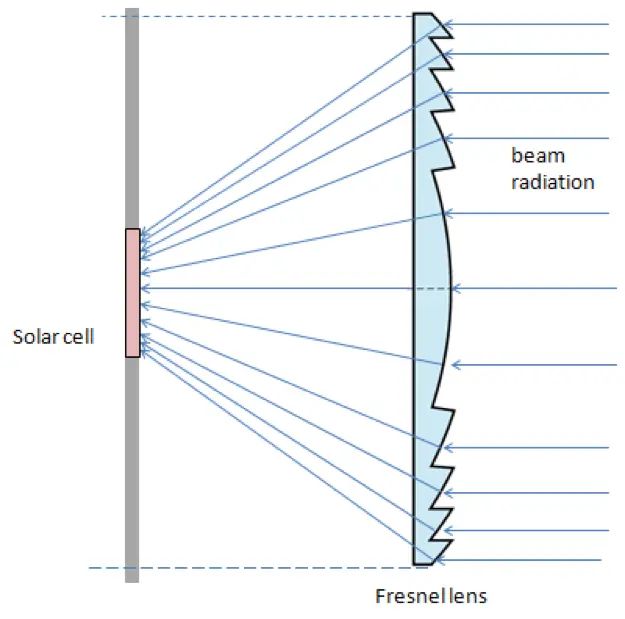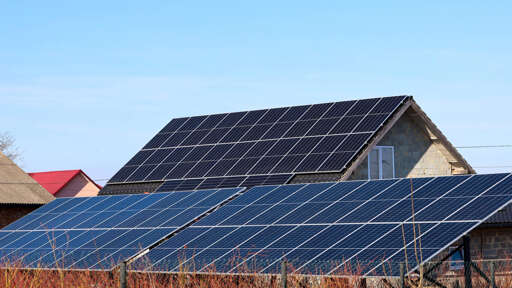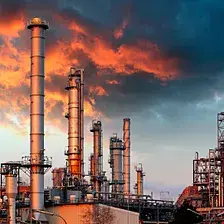cross-posted from: https://slrpnk.net/post/24690127
Solar energy experts in Germany are putting sun-catching cells under the magnifying glass with astounding results, according to multiple reports.
The Fraunhofer Institute for Solar Energy Systems team is perfecting the use of lenses to concentrate sunlight onto solar panels, reducing size and costs while increasing performance, Interesting Engineering and PV Magazine reported.
The “technology has the potential to contribute to the energy transition, facilitating the shift toward more sustainable and renewable energy sources by combining minimal carbon footprint and energy demand with low levelized cost of electricity,” the researchers wrote in a study published by the IEEE Journal of Photovoltaics.
The sun-catcher is called a micro-concentrating photovoltaic, or CPV, cell. The lens makes it different from standard solar panels that convert sunlight to energy with average efficiency rates around 20%, per MarketWatch. Fraunhofer’s improved CPV cell has an astounding 36% rate in ideal conditions and is made with lower-cost parts. It cuts semiconductor materials “by a factor of 1,300 and reduces module areas by 30% compared to current state-of-the-art CPV systems,” per IE.
The issue here in NL is with the power grid, not the price of the panels. The installing of them is already one of the most expensive parts of getting panels since you need to build scafolding for most houses.
That is Fraunhofer who are the people most responsible for developing MP3
They need changes in laws too. Instead of chewing up open space and farmland I’d rather see more urban areas used like parking lots and industrial sites.
Yeah, Don’t put the solar farms in meadows, or on mountains. put them on warehouse roofs, over highways, over parking lots, on government buildings, etc etc.
Roughly 50% of germany is used as farmland. On 60% of the farmland crops to feed livestock are grown. On 20% of it crops for energyproduction (biofuel, biogas). If you take for example rapeseeds, used for biodiesel, you would harvest around 50 times as much energy with a pv-plant on the same area. You would need to install pv on 5-6% of the farmland to produce enough electric energy for all of germany for a year. Granted you also can provide the grid for it and enoguh storage.
Not only that, but livestock can still graze under panels, on grass that often grows just as well with a little shade.
Surely the grass would grow better with more son(?)
Not always. Wide open fields get baked dry mid summer in a lot of local climates.
Yup, my grass does best under my trampoline.
https://ieeexplore.ieee.org/document/10938951
This is 36% MODULE efficiency with expensive cooling. 30% actual year long efficiency without it. Requires dual axis tracking. Seems heavy as its very tall/deep.
Headline of cost reduction is very unlikely. Especially on a per acre/fairly large area basis. Dual axis tracking requires more spacing than fixed orientation rows, and loses benefits under cloudy conditions. While power at 7am and 5pm is more valuable when competing against high penetration solar, batteries are now more competitive than tracking, and can serve edge of day and night power needs. Tracking solar tends not to be built anymore, due to low cost of panels. The cooling infrastructure is also not as useful as it is on rooftops because the heat capture has useful benefits for homes.
It is also unclear how this has advantage over parabolic mirror.
Agri PV is a real use case, where more free land means more land use, even if most of it gets more shade, except around noon.
Solar panels as fences is what is needed.
Kinda works if you use bifacial panels.
Bifacial panels as a fence provides 3% extra yield but 30% extra revenue
https://www.gridcog.com/blog/solar-fence-vs-ground-mount-solar
Sure, but if you wanted solar panels to work on both sides of your East/West facing fence, you’d have to buy 100% more panels, so bifacial saves you 70% there. Seems like a good deal. I’m sure you read the “Model Overview” of that article and caught that the monofacial panels were facing the equator, and the bifacial panels were facing East/West…
Edit: bad read on my part, I didn’t not understad the full content of the previous message.
I don’t think we are arguing. I was just giving you more details.
My interpretation of your comment was that bifacial solar panels are a useless gimmick which allows companies to charge more for a cheaper product.
Is that correct?
No, the opposite. They are superior. Bifacial panels have a 3% additional yield over standard panels. The +10-20% cost premium is covered by the +30% revenue
Even with traditional mountings, Bifacial panels pick up extra light reflected from the ground.
It’s viable as edge of day high power boost in east/west direction, and simply any extra power that is cheap and easy to install, that adds privacy or keeps the controlled beings inside.
Urban shade
You are at least completely and utterly wrong about tracking solar not typically being built anymore. Any major solar site uses tracking if you have a couple acres on a corner maybe not but I think you are being a bit too general. Panels are only one of many costs per solar panel installation, its still cost effective overall to increase efficiency.
You’re right about US. seems half uses tracking. No numbers on China which is 30x larger market. Economics still only make sense at consumer level of $1/watt panel prices, to me, but I guess there are reasons I don’t understand.
“The lens makes it different from standard solar panels that convert sunlight to energy with average efficiency rates around 20%, per MarketWatch. Fraunhofer’s improved CPV cell has an astounding 36% rate in ideal conditions”
Why would I want to compare one panel’s average efficiency to another panels efficiency in ideal conditions?
Marketing. Fresnel lenses are not going to do well with diffuse light.
Maybe I’m misunderstanding but wouldn’t diffuse light be what it’s going to be best at? While it’d be worse on a sunny day when there is an optimal single direction for the light to come in?
It’s the opposite of a light house fresnel lens - instead of scattering the light source evenly out, it’ll capture diffuse incoming rays from random directions better and concentrate it on the photovoltaic cell? However it would be at the cost of being able to capture direct sunlight efficiently as only some of the lens would ever be in the best position to capture the direct rays?
wouldn’t diffuse light be what it’s going to be best at? While it’d be worse on a sunny day when there is an optimal single direction for the light to come in?
No. Concentrated solar requires perfect alignment, dual axis tracking, to the sun. diffuse light does not concentrate.
A reasonable alternative design would be cheap ordinary PV cells with outward bubbles instead of inverted parabolas that would capture off axis light better on a fixed tilt.
Banned in North America in 3… 2…
Oh don’t worry, I’m sure the capitalist system will manage to fuck it up somehow.
“If we allow german solar panels into america it will destroy our good hard working american businesses. Tarriffs on german solar panels of 69%!”
US Government - not on my watch…
The only thing slowing down the transition from fossil fuels to renewables is the same impediment it has always been: oil money protecting itself.
I’m not sure what to think about the Fraunhofer institute in general. They have made some nice discoveries/inventions in the past, such as audio compression algorithms and such. That is why i hyped them for a bit.
But they really disappointed me with their writings on solar panels in the past few years.
They said that the efficiency of solar panels today is too low to deploy them widely in practice, which is simply not true. They tried pushing Perovskite solar cells for no reason.
I’m not sure what to think about this article’s idea. On one hand, adding lenses to solar parks makes them significantly more complicated and therefore expensive to build. Also, if the parks have complicated physical forms, they’re more susceptible to wind, and that could damage them.
On the other hand, yes, adding lenses means you need fewer actual solar panels for the same amount of energy harvested.
I’ll therefore put it in the category of inconclusive inventions, together with the idea of adding a motor to the solar panels so they can track the sun. That would also make the solar panels more efficient, but also more complicated and more prone to mechanical failure.
I’d like to know what they’re going to do about the heating issue. Concentrating solar radiation carries with it an increased heat load. And heat reduces solar PV efficiency. I’m already losing about 30% in summer when the panels heat up.
This was my first question too! I thought heat makes them wear out faster.
It does. Also seems weird nobody thought of a magnifying glass before.
But its also the beauty in science. Now somebody else thought about it, and they might work harder to fix the next problem: Heat.
If that gets better now, solar panels will increase in output even more. There are so many technologies going into one product, and each field have its own experts.
I’m excited.
They probably did, but like they said, the heating is probably the issue.
I can see them adding a cooling element. Maybe even water cooling.
If they could implement water cooling, and then use the heated water in a central heating station for house warming, it would be genius.
well, adding lenses kinda requires motorizing the panels to track the sun, right? otherwise the “hot spot” is going to move around across the day/year
is there a way to shape the lens to mitigate this?
You make them convex.
You can shape them that no matter how the light falls on it, it will align to the center. Kind of like how satellite dishes work but in reverse.
You can shape them that no matter how the light falls on it, it will align to the center. Kind of like how satellite dishes work but in reverse.
how do you do this, actually? I’m curious about the details because I just watched a video on compound parabolic reflectors, haha
a regular (ideal) convex lens with a single focal point will have the image move around as the light source moves across the sky. AFAIK satellite dishes tend to be paraboloids, which focus parallel rays onto the focal point, and if you change the angle of the light source, you’ll start losing focus. Stuff like the DSN and radio telescopes absolutely do have to aim and track their targets (or are forced to follow the rotation of the earth).
satellite dishes that are aimed towards geostationary satellites don’t have to move (because their targets are stationary in the sky), while stuff like starlink tracks targets with a phased array.
Could have some refraction or hologram thing that bends the light the right way, maybe? Or like a matte glass that equalises the load.
Or why not just use (big) mirrors?
Won’t help with heat ofc!
Or why not just use (big) mirrors?
I mean, this is a thing with solar concentrators already, haha
and for those the heat is a feature :p
What are concentrating photovoltaics? One of the ways to increase the output from the photovoltaic systems is to supply concentrated light onto the PV cells. This can be done by using optical light collectors, such as lenses or mirrors. The PV systems that use concentrated light are called concentrating photovoltaics (CPV). The CPV collect light from a larger area and concentrate it to a smaller area solar cell. This is illustrated in Figure 5.1.

Also, from the article - 33.6% efficiency in real-world conditions:
A 60 cell-lens prototype was studied for a year. In “real-world” conditions, CPVs achieved up to 33.6% efficiency. The 36% mark was posted at 167 degrees Fahrenheit. The prototype showed no signs of degradation, according to IE.
A lighthouse uses the same lens, just with the light coming from the inside. Since this is old knowledge, what is the drawback? Why isn’t this widespread?
My completely uninformed guess:
-
The lens and assembly costs too much compared to just more solar panels
-
The lens/panel combo is so bulky/prone to failure it becomes unreasonable to actually install/use.
Adding to what Eldest_Malk said: They aren’t just putting a new type of lens over standard solar cells, they are also designing/fabricating custom cells to work with the lenses. [I’m not a PV expert, but the fact that the IEEE paper focuses so much on the cells and not just the lenses leads me to believe that the lenses can’t just be used with whatever standardized solar cells are on the market]
The cells are super expensive but super small. They need cooling for efficiency, but if the heat moving is useful, can ignore the energy cost.
id guess a lot went into designing a solar cell that could take being heated to 167F without losing efficiency or breaking. I think most common house solar panels have a temperature coefficient listed on their datasheet that measures how much its ability to generate power decreases per every degree above 77F
Tech ingredients did a test with active cooling on standard solar panels and found the energy to cool it was about what was gained by having a cooler panel.
The upshot should be longer life if the panel though, so the conclusion was still a net gain.
They mention standardisations and cost savings in their paper, as well as solving the heat load per cell problem by decreasing cell size. They also mention that there’s been a lot of micro-CPV module designs but that they haven’t been scaled up. Some quotes below:
Various researchers and developers have been exploring different micro-CPV module designs [5], [6], [7], [8], [9], [10], [11], [12], [13]. Most approaches have been tested on small prototypes or minimodules, while fewer have been realized with aperture areas (Aap) above 200 and 800 cm2,[…]
By decreasing the sizes of the primary optics and the solar cells, the heat load per cell is minimized. This reduction allows for sufficient heat spreading via the circuit board, enabling the direct assembly of solar cells onto the circuit board on glass.
At Fraunhofer ISE, we have developed a micro-CPV module concept [17], [18], [19], [20], [21], which is based on parallelized manufacturing processes and commercially available components.
The final module features a panel size of 24” × 18”, which is a standard in the microelectronics industry, facilitating machine adaption without necessitating special adjustments.
The article states that it’s smaller and cheaper. The reason it’s not widespread is that they just invented it.
It is interesting that someone just recently thought to use a fresnel lens with photovoltaics when they’ve existed for hundreds of years
It isn’t that. They have been talking about Fresnel lenses on PV for decades. It’s solving the heat issue and the size issue. A Fresnel lens gathers a large area of light and focuses it down, including focusing the heat. Normal PV cells cannot handle that amount of heat.
This is exactely how most inventions are made: put together two things from different realms that might have a good fit.
Just wait a few years and they will find a way to use the light directly instead transferring it into electricity. There‘re some IC‘s that already use light instead of voltage to compute.
I suspect that the lens makes the whole solar assembly more directional and the Sun moves in the sky.
Commercial solar panels often move with the sun, too
The overwhelming majority of them don’t, traditionnal rooftop installs don’t either.
costs too much
Various trade wars are changing those economics.
-
Wait for something fucking idiotic like:
“U.S. government to implement 5,000% tax on new solar technology…”
“also, revenue from new tax will be used to build new coal mines staffed by concentration camp inmates 1”
Solar is too woke and Marxist for the current US government.
Real men burn shit /s
Solar panels are already quite cheap. What we need is much cheaper grid forming inverters so we can stop destabilizing the grid with solar.
If the cost of panels drops significantly, there would be more capital available to spend on inverters, even if they stay at the current prices, still decreasing the cost of deployment. But yes. 😄
Grid forming will just mean the keep running the house when the power goes off, it’s not safe for them to be pushing power when it’s disappeared, that has been set by regulation in many countries.
Small scale installations on regular houses are probably not the best for grid forming. Any pv installation with grid forming capability would be required to give some control to the grid operator because it’s their job to keep the grid stable.
What you describe is more like black start, providing power to the grind when it is down. This has to be controlled well, and only a few plants need to be capable of it.
Grid following means something like whatever the grid does, the inverter injects power supporting it. A grid forming generator or inverter also follows the grid somewhat, but tries to get it to an optimal condition. This entails things like voltage control by reactive power, frequency control by operating reserve, fault ride trough capability and so on. Many of those are naturally provided by large conventional power plants using synchronous generators like gas, nuclear or hydro. For inverter based systems, they have to be considered explicitly. For battery storage most are relatively easy to implement, some also in solar inverters. The tech exists, but yes, in some countries the regulations have not kept up with rapid expanse of inverter based power generation in the last years.
I thought this has already been done. Guess there’s some nuance to it that is above my understanding of it.
Anyhow, advancements in solar are cool in my book.
I am not a scientist so please correct me if I am off base, but did it really take them this long to attempt to focus light onto PV cells using a fresnel lens?
My hobby as a 15 year old was buying broken projectors to harvest the fresnel lenses in the lamp on top. They could focus sunlight so powerfully that you could burn shit. I didn’t do that, surprisingly. I was like Marge Simpson, I just thought they were neat.
Adding to what the others wrote, solar cells become less efficient at power conversion (light -> electricity) as the temp of the solar cell materials (semiconductors) increases. So the issues is how to get more photons to the semiconductor without heating it up.
Would a UV filtering lens help? Do solar cells generate more power from certain parts of the light spectrum?
With one layer the case is simple. There is a certain light energy at which the conversion of light to current occurs called gap energy. If the light energy is lower than that no conversion can happen and if the light energy is higher the extra energy is converted to heat and only gap energy remains.
Filtering UV would be a loss but a small one.
OK, take that Fresnel lens that you were using to melt pennies and then focus it on a PV cell that is also made of metal. What might be the expected response? The science in this case is making PV cells that can handle the intense heat.
That makes sense. If I understood everyone clearly, it’s not the idea to use a fresnel that’s new here, it’s the fact that we just haven’t yet had anything capable of withstanding those temperatures and still allowing for the piezoelectric effect to happen.
IIRC, this sort of thing has been floated before. The issue is that you can’t just focus that much light on the solar cell. It’ll burn out.
Not being any kind of solar energy expert, my initial thought was how the cell’s would hold up under the increased heat, and what technology (if any) they’d be using to monitor/mitigate. The article does briefly mention the cells achieving ~33% @ ~167° F, and does mention (what seems to be tangential) technologies that allow for cells to be nailed down as if they were shingles.
My guess is that it isn’t that they finally using techniques that seem obvious to us, but that they’ve developed supporting tech to mitigate the detrimental effects of using magnification.
i guess a lot of research projects are just there to give the researchers something to do and money, and i’m sure the idea of using lenses has been floated before.
the thing is that it’s not really as good an ideas as it originally seems. After all, you need heavy solid lenses that you have to install above all solar panels, and the cost of that is not negligible. On top of that, there’s other problems that others have already mentioned.












